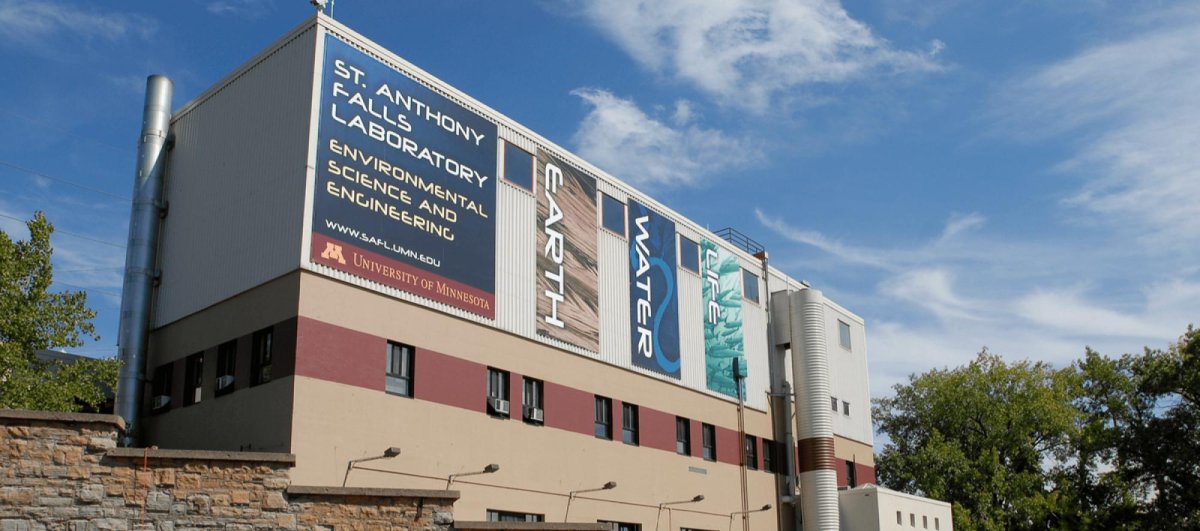A look back at the St. Anthony Falls Laboratory

Around 1908 the University of Minnesota began dreaming about establishing a hydraulic laboratory at the St. Anthony Falls after the City of Minneapolis abandoned a pumping station desirably located on Hennepin Island. The actual lab didn’t materialize until 1936 when President Roosevelt’s New Deal provided funds and workers through the Works Progress Administration.
Designed by its first director, Dr. Lorenz G. Straub, the St. Anthony Falls Laboratory (SAFL) was dedicated in 1938 and began its research activities by building a scale model of the Upper Mississippi to study the locks and dams near St. Anthony Falls. Over the years, SAFL has been instrumental in designing and testing some of the largest river engineering projects built around the world. Excerpts from our historic research photo collection show models of spillways and dams, flooding abatement, stormwater management, and, eventually, a broadening focus to include supercavitation, a wind tunnel, stream and delta restoration, and renewable energy.
Today, SAFL has emerged from a three-year, $16.1 million dollar renovation funded by National Science Foundation and the State of Minnesota. The renovation will enable us to continue addressing, through cutting edge research, education, and outreach, major societal challenges in renewable energy, environmental restoration, aquatic invasive species control, and human health. Please enjoy this look through our past as we celebrate our grand reopening and the new opportunities this renovation will afford us. More historic photos are available here.
